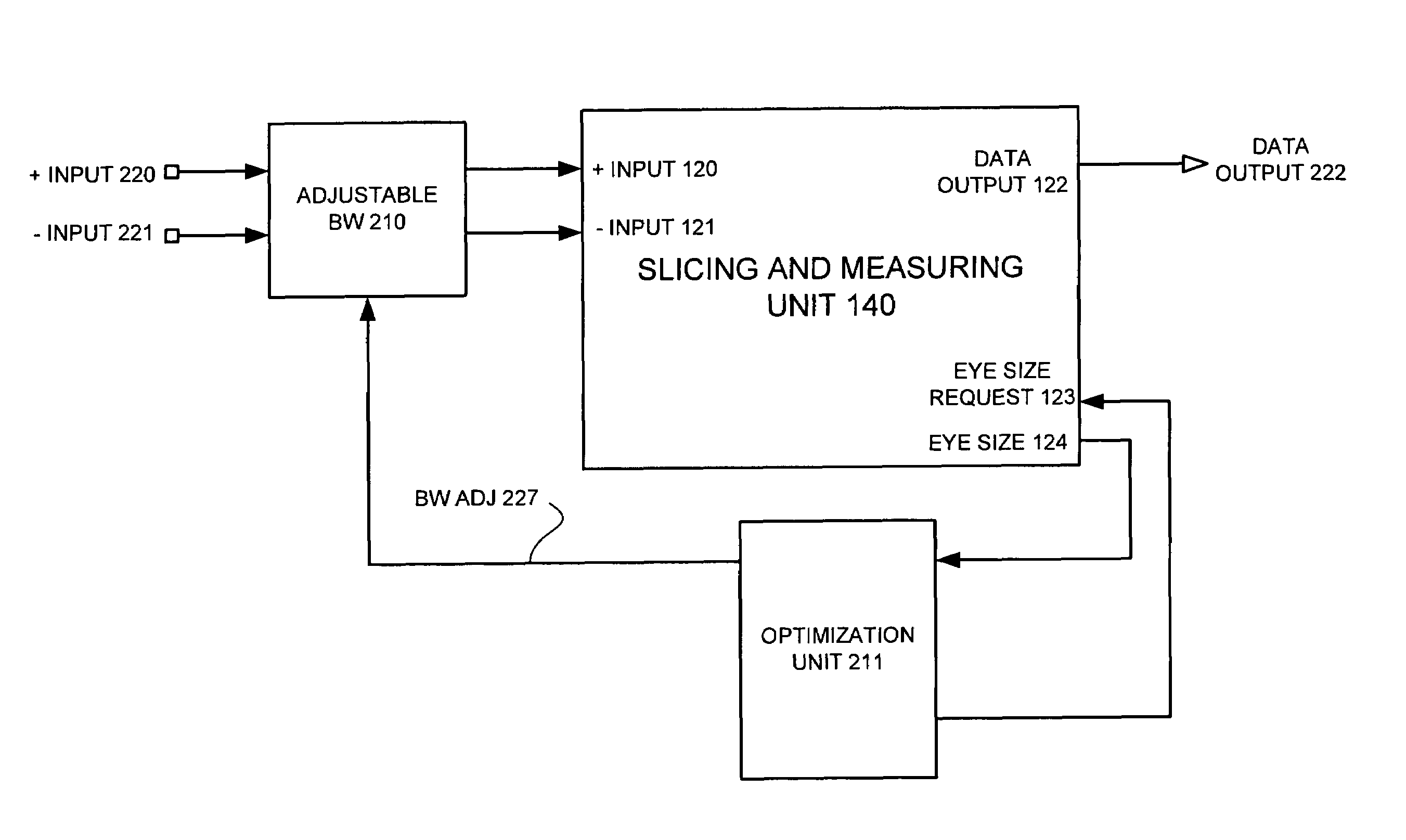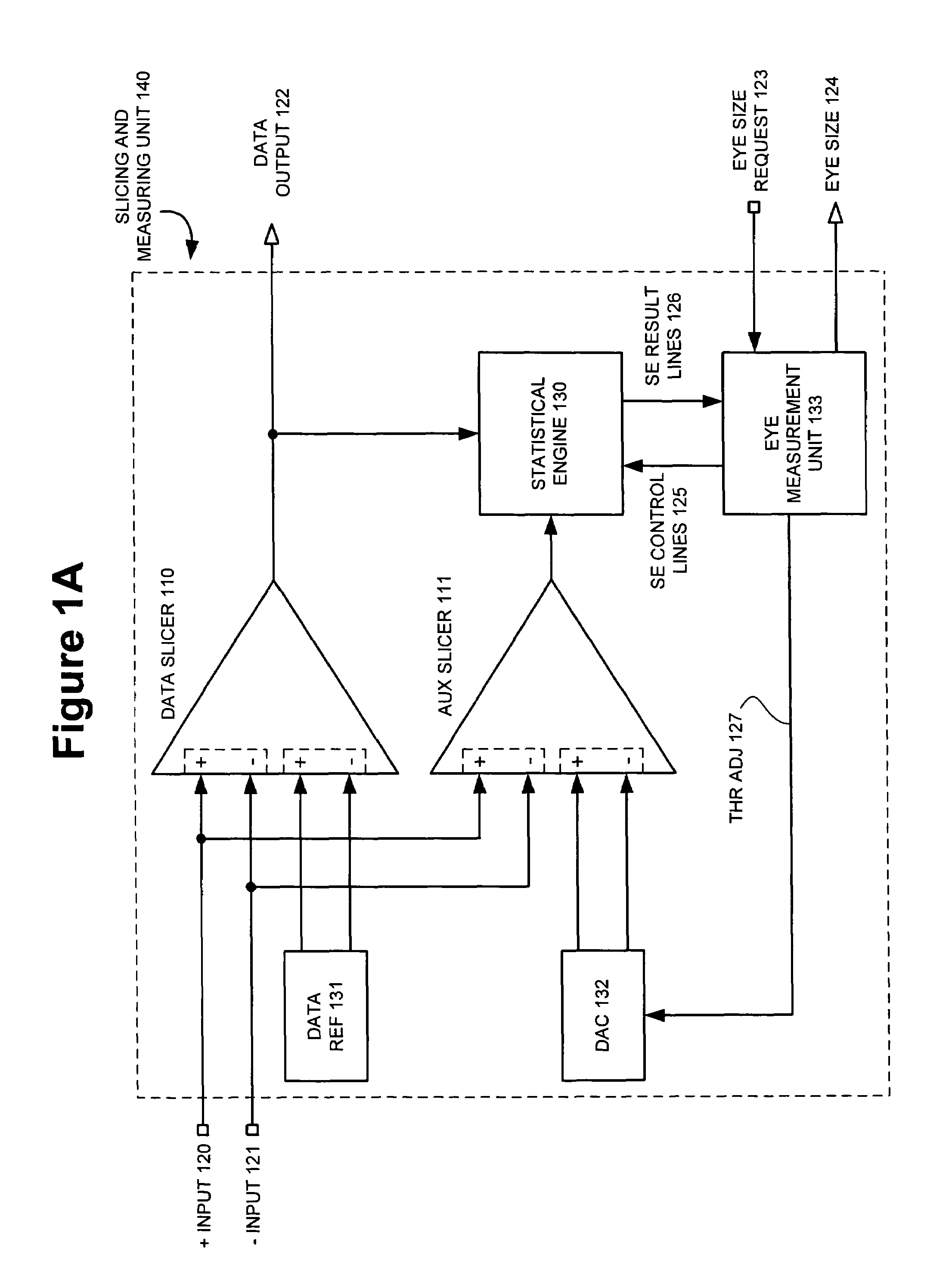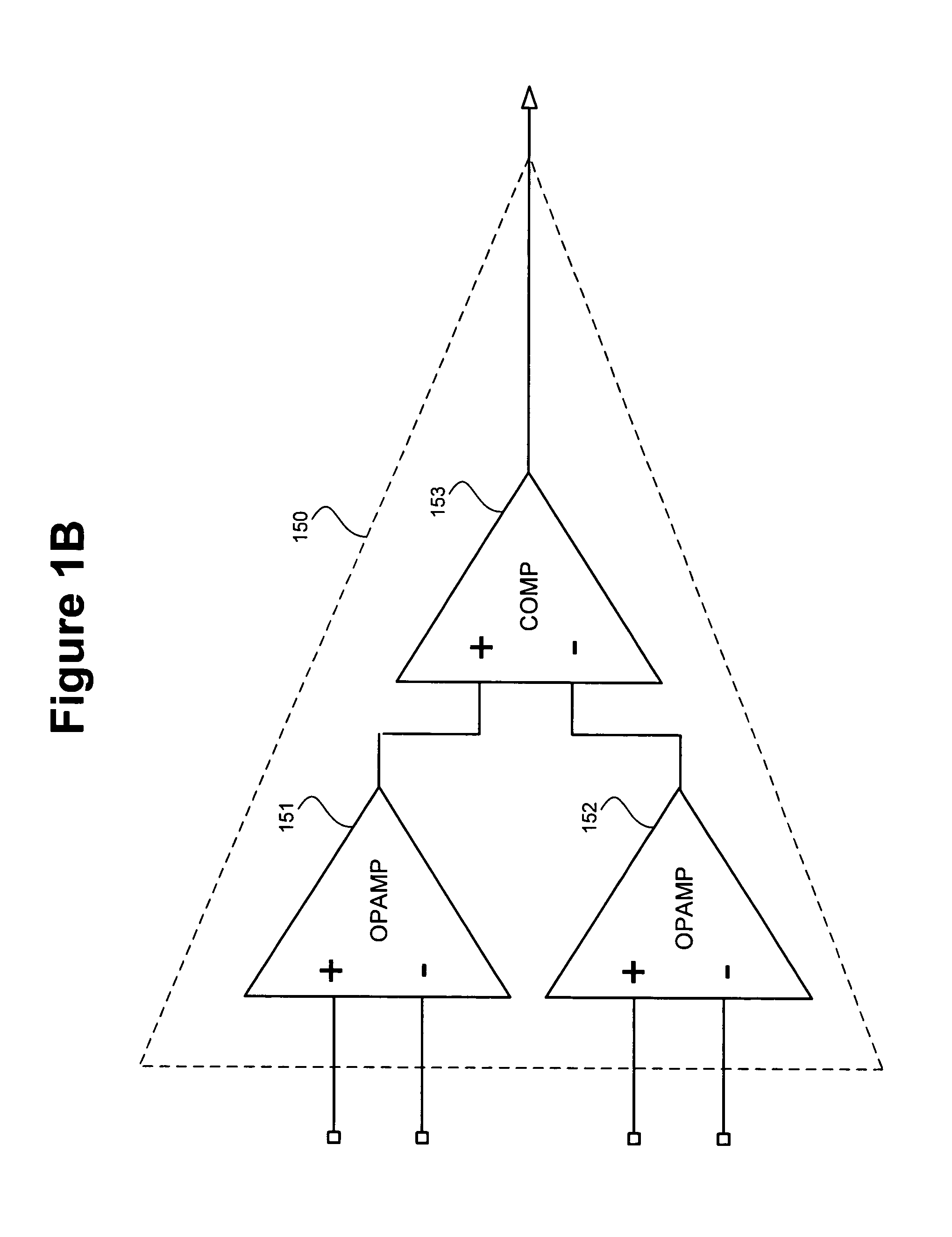Method and apparatus for eye-opening based optimization
- Summary
- Abstract
- Description
- Claims
- Application Information
AI Technical Summary
Benefits of technology
Problems solved by technology
Method used
Image
Examples
Embodiment Construction
[0041]Reference will now be made in detail to preferred embodiments of the invention, examples of which are illustrated in the accompanying drawings. Wherever possible, the same reference numbers will be used throughout the drawings to refer to the same or like parts.
[0042]
Table of Contents to Detailed Description1.Overview2.Eye Opening Size3.Eye Opening Measurement 3.1. Eye Edge Location 3.2. Pseudocode For Eye Opening Measurement4.Hardware Implementation 4.1. Slicing and Measuring Unit 140 4.2. Example Optimizing Receiver5.Glossary of Selected Terms
1. Overview
[0043]The performance of a DTS receiver can be measured by the size of its “eye openings.” Eye opening size is defined in the below section 2: “Eye Opening Size.”
[0044]The measurement of eye opening size can be accomplished, without interrupting the normal operation of a receiver in a DTS, by utilizing two types of slicers: a data slicer and an auxiliary slicer. Measurement of eye opening size, using these two types of slicer...
PUM
 Login to View More
Login to View More Abstract
Description
Claims
Application Information
 Login to View More
Login to View More - R&D
- Intellectual Property
- Life Sciences
- Materials
- Tech Scout
- Unparalleled Data Quality
- Higher Quality Content
- 60% Fewer Hallucinations
Browse by: Latest US Patents, China's latest patents, Technical Efficacy Thesaurus, Application Domain, Technology Topic, Popular Technical Reports.
© 2025 PatSnap. All rights reserved.Legal|Privacy policy|Modern Slavery Act Transparency Statement|Sitemap|About US| Contact US: help@patsnap.com



